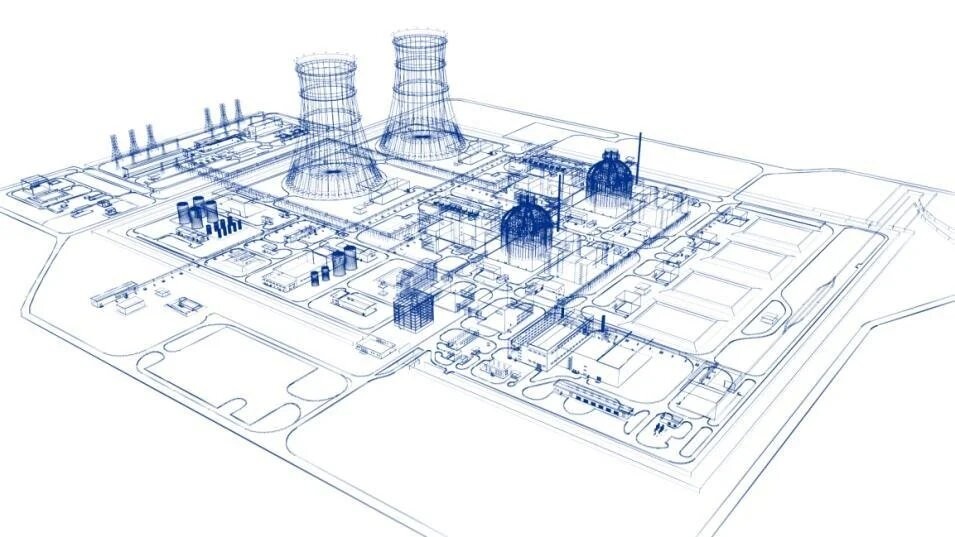 Russia’s Titan-2 is to build two new units with VVER-TOI reactors at the Smolensk-II NPP by 2032 and 2034. Smolensk-II will be built 6 km away from the Smolensk NPP which comprises three RBMK reactors, nearing the end of their design life. According to the roadmap, the preparatory phase of construction is a long, but extremely important, said Sergey Gromov, Deputy Director of the Smolensk NPP. “Only three years are allotted for the formation of project documentation. It will be a library of multi-volume publications, because a project is needed for each facility on the plant site. There will be almost 200, large and small.”
Russia’s Titan-2 is to build two new units with VVER-TOI reactors at the Smolensk-II NPP by 2032 and 2034. Smolensk-II will be built 6 km away from the Smolensk NPP which comprises three RBMK reactors, nearing the end of their design life. According to the roadmap, the preparatory phase of construction is a long, but extremely important, said Sergey Gromov, Deputy Director of the Smolensk NPP. “Only three years are allotted for the formation of project documentation. It will be a library of multi-volume publications, because a project is needed for each facility on the plant site. There will be almost 200, large and small.”
A special project office coordinates and monitors implementation of the roadmap. It includes employees of nuclear utility Rosenergoatom and its branch for capital projects, as well as general designers and contractors. It will solve operational problems and ensure that the active phase of construction begins strictly according to plan.
In 2021, the Federal Agency for State Property Management issued an urban development plan, and the Centre for Humanitarian Demining examined the construction site for explosive items. In 2022, a land lease agreement was registered in Rosreestra, which approved the design assignment and construction schedule. Titan-2 will begin preliminary work on what will be the largest construction project in the region since Soviet times. However, it will first need approval from the Main Directorate of State Expertise of Russia and a construction licence from Rostekhnadzor.
The site was chosen from three alternatives, said Gromov. “The natural, social, economic, technical characteristics of the area were analysed. This was to establish whether there are enough water resources, and what is the seismic stability and the proximity of infrastructure.” The territory in the area of the deserted village of Piatidvorka in the Roslavl on the right bank of the Desnogorsk reservoir was chosen.
On a site of 325 hectares Atomenergoprojekt conducted engineering and geological surveys. A total of 471 wells were drilled, the deepest, being 150 metres where the reactors will be. Samples of soil and water were delivered for laboratory analysis to the research institutes of Maloyaroslavtz and St Petersburg. Their results will be ready by May 2023 and will form the basis of the project.
A historical and cultural examination of the construction site took place in autumn 2022. Employees of the Institute of Archeology of the Russian Academy of Sciences worked there for several weeks. They did not find archaeological sites, but they found several exhibits which will be placed in museums including stone age weapons and a Viking era chair.
At the same time, work is underway on the design of access roads, railways, engineering communications, and the supply of electricity and water. The priority is housing for the builders. Based on the experience of building the Kursk-II NPP, it was estimated that at the peak of work in 2030 there will be over 9,000 people on site. In this regard, several apartment buildings are planned to be built in Desnogorsk, the operators town for the existing NPP. A rapidly erected town with infrastructure will also appear near the site of the new plant. In addition, a spare emergency control centre, an external radiation monitoring laboratory and a training centre will be erected in Desnogorsk.
Gromov explained that it is a tight schedule. Concreting the foundation for the reactor building of the first unit is planned for March 2027. It is also necessary to build supporting facilities - roads, warehouses, workshops, concrete and mortar components, workshops, treatment centres and many other facilities. “In a word, there are many tasks, but they inspire us, because we are involved in one of the innovative projects… which will determine the appearance of the nuclear energy industry of Russia and the world in the next century.”
Image: Drawn plan of the two new units at the Smolensk-II NPP (courtesy of Rosatom)



